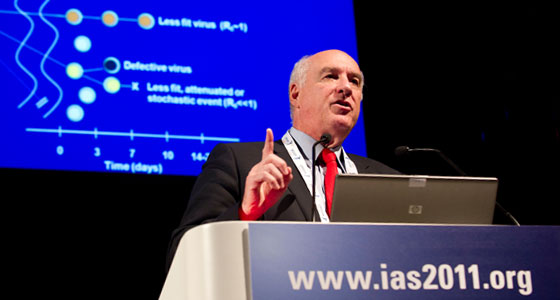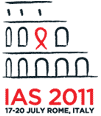
International AIDS Society President, Elly Katabira ©IAS/Marcus Rose/Worker's Photos
Excitement has greeted the opening of the International AIDS Society Conference in Rome.
Over 5000 delegates have gathered for the three-day conference where the use of HIV treatment as prevention looks set to dominate discussions.
“We have witnessed two years of significant biomedical advances, the likes of which we have not seen since the antiretroviral breakthroughs of the mid-1990s,” said Elly Katabira, President of the International AIDS Society.
“The excitement around these advances in research – whether they be the CAPRISA 004 vaginal gel, the HPTN 052 study on treatment as prevention, talk around the path towards a cure, or the encouraging signs on PrEP and vaccines – is very much driving the debates and discussions that we are going to see in Rome over the next few days.”
Partly because of these findings, the United Nations has set a target of treating 15 million people with antiretroviral drugs by 2015.
Last week, two studies showed that pre-exposure prophylaxis (PrEP) reduced the risk of infection with HIV by up to 78%.
However, delegates have been cautioned that efforts will be needed to ensure that the impressive results of clinical trials are replicated in routine care.
UNAIDS Executive Director Michel Sidibé said: “Sceptics are saying that expanding treatment is risky and unsustainable. What is truly risky, truly unsustainable, is waiting for treatment.”
There remain concerns about the funding of the global response: “We pay now, or we pay forever!” said Sidibé.









Connect with NAM on Facebook: Keep up to date with all the exciting projects, latest achievements and new developments that are going on in the world of NAM.
Follow NAM on Twitter for links to hot off the press news stories from our editors covering key developments and conferences as they happen. Our news feed is linked to www.twitter.com/aidsmap_news and we also tweet from www.twitter.com/aidsmap
Follow all the conference news by subscribing to our RSS feeds.